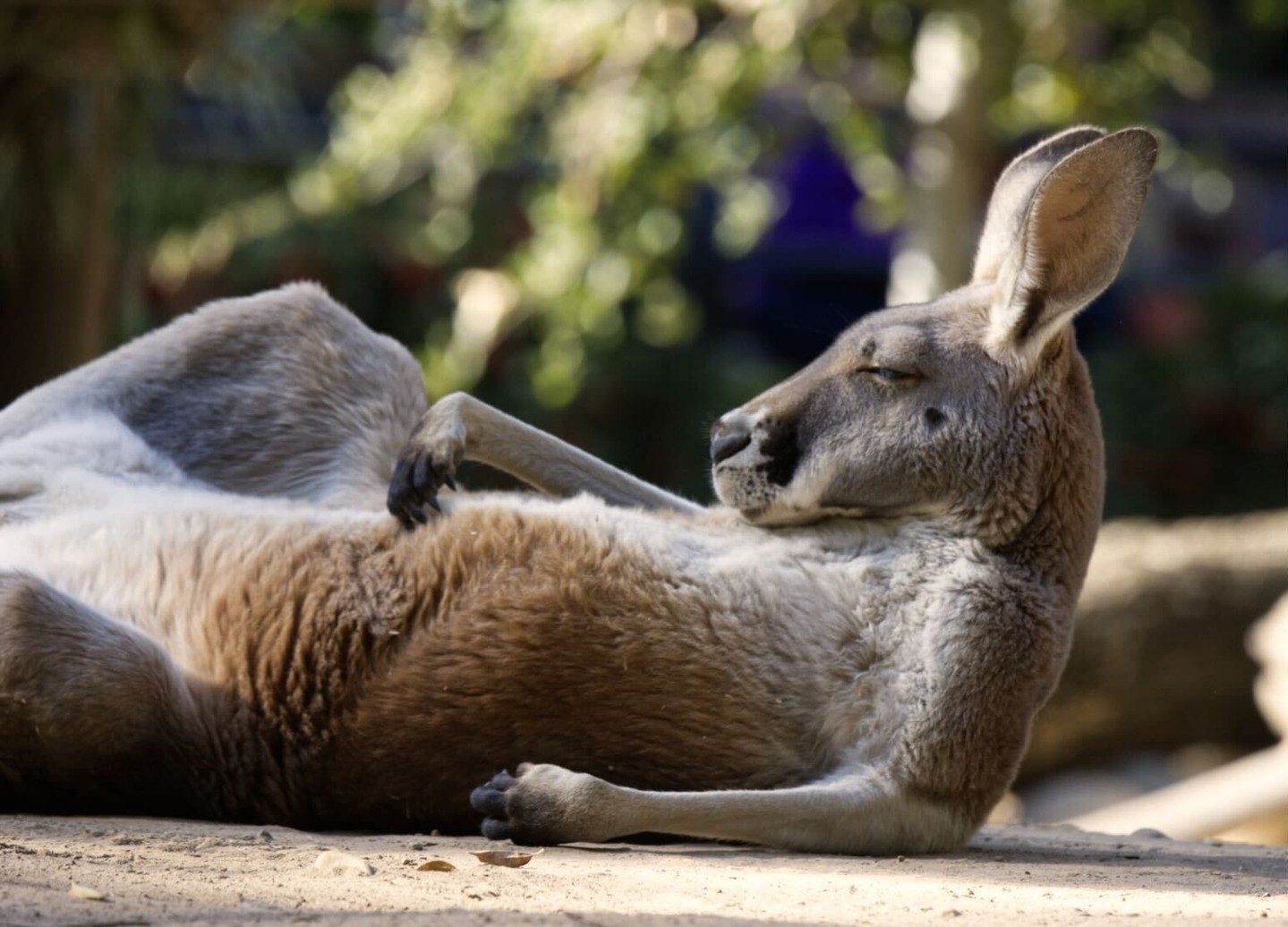– The evolutionary adaptations of Red kangaroos’ reddish-brown fur
– How Red kangaroos maintain body temperature and survival tactics in the desert
– The role and significance of Red kangaroos in their ecosystem
– Conservation efforts for Red kangaroos and their importance in zoo management
– Strategies for wildlife conservation and the human impact on Red kangaroos’ habitat
The iconic Red kangaroo is a majestic symbol of the Australian Outback. Red kangaroos are the largest marsupials known for their powerful hind legs, large feet, and strong tails, often used for balance. One of the most notable features of these animals is their striking reddish-brown fur, which earns them their common name and serves multiple essential functions for their survival in the harsh desert environment.
Red kangaroos have evolved a reddish-brown coat that provides effective camouflage and offers a layer of defense against the extreme temperatures of their natural habitat. The fur, comprising outer guard hairs that reduce the amount of solar radiation reaching their skin and a second layer of fine, insulating hair, regulates body temperature. As the sunlight beats down upon them, the reddish hues in their fur reflect these rays, preventing the kangaroo from absorbing excessive heat. Moreover, these characteristics are well-suited for the arid conditions of inland Australia, where the ability to blend into the background and manage heat exposure is critical for survival.
Maintaining a stable body temperature is vital for Red kangaroos, who face daily temperature fluctuations in their desert home. They display a range of remarkable behavioral and physiological adaptations to combat these challenges. Behaviorally, kangaroos are more active during cooler periods, such as dawn and dusk, to avoid the midday heat. When temperatures soar, Red kangaroos can be seen licking their forearms, where the saliva evaporates and cools the blood in the veins close to the surface. Physiologically, their circulatory system is adapted to dissipate heat effectively. For instance, blood flow to the skin increases to maximize heat loss when temperatures rise.
Red kangaroos play a pivotal role in their ecosystem by spreading plant seeds and aiding in the maintenance of grasslands. Their grazing behavior can help maintain the balance between different plant species, encouraging biodiversity. These marsupials also serve as prey to predators like dingoes, contributing to the dynamic balance of predator-prey relationships in their environment.
Nonetheless, Red kangaroos often face threats from habitat loss due to human activities such as agriculture and urban development. This encroachment disrupts their natural habitat, altering the landscape and reducing available resources. Additionally, climate change poses a significant threat by intensifying the aridity of their desert environments, potentially leading to resource scarcity and increased competition among wildlife.
Red kangaroos are a flagship species for education and conservation messages in zoo management. They provide an opportunity for zoos to educate visitors about Australian ecosystems’ beauty and fragility. Red kangaroos require spacious enclosures that mimic their natural habitat, including enrichment activities to promote natural behaviors. Staff with specialized knowledge are required to care for these unique animals. Well-managed programs create awareness and contribute to scientific research that can inform conservation strategies.
Conservation efforts for Red kangaroos must be multifaceted, engaging in habitat preservation, supporting scientific research, and fostering coexistence between human populations and wildlife. For example, land management practices that incorporate the needs of native species can help ensure the longevity of their populations. Organizations in this field aim to establish protected areas, monitor populations to prevent overhunting and implement initiatives to restore degraded habitats.
Furthermore, community involvement and education are key components in conserving Red kangaroos. By fostering a connection between people and wildlife, conservationists can promote a greater appreciation for these animals and their challenges. Engaging local communities in conservation efforts enables a collaborative approach that benefits human populations and the region’s biodiversity.
Red kangaroos symbolize the delicate balance between survival and adaptation in the animal kingdom. As a charismatic species, they draw attention to the pressing issues of wildlife conservation and environmental management. Through the collective efforts of zoos, researchers, conservationists, and the public, there is hope to safeguard the Red kangaroo and the intricate tapestry of life they represent within the Australian Outback.
Red kangaroos’ reddish-brown fur is a perfect entry point for understanding the remarkable adaptations animals have developed to thrive in challenging environments. By studying and preserving Red kangaroos, we gain insight into the importance of each species in maintaining ecological health and develop strategies to mitigate the human impact on nature. This understanding underlines the need to maintain natural habitats and ensure that wildlife populations, such as the Red kangaroo, endure for generations.
*****
Source Description
Red kangaroos get their name from their reddish-brown fur, which helps them blend into their desert habitat. Their fur also reflects sunlight, helping to regulate their body temperature, as you can see Porter doing here! ☀️
We’re thinking of channeling our inner Porter this weekend and spending some time just chilling…what are your plans?


